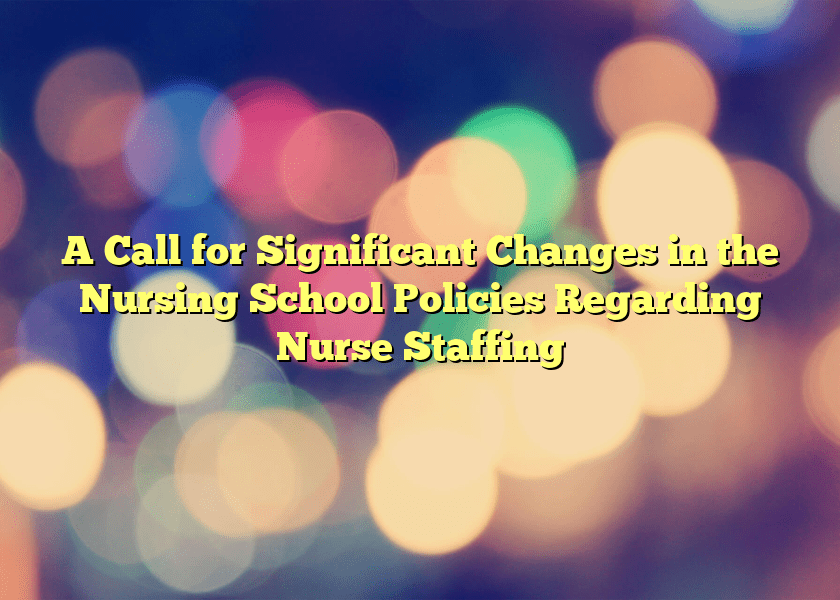A Call for Significant Changes in the Nursing School Policies Regarding Nurse Staffing
The American Nurses Association or the ANA is not only a conglomeration of the US’ 2.7 million registered nurses through its 54 constituent member nurses associations. The ANA is a full-service professional organization that actively advances the nursing profession by fostering high standards of nursing practice, promoting the rights of nurses in the workplace, projecting a positive and realistic view of nursing, and petitioning the Congress and regulatory agencies about the health-care issues affecting both the nurses’ practice and the public’s health. That is why, with these ideals, the ANA is quick to respond to the recent study of the Health Affairs Journal calling for significant action from the legislators of nursing school policies pursue significant changes in the nurse staffing legislation.
The recent study published by the Health Affairs journal reveals that there are more than 6,700 patient deaths and a total of 4million agonizing days of patient care in hospitals annually. This called the attention of the president of the American Nurses Association (ANA) Barbara Blakeney, MS, RN, since the study presents new evidence that the current nursing school policies are inadequate in organizing the sufficient staffing of nurses in the hospitals all across the United States. This is parallel to the findings of the ANA’s own report, “Nurse Staffing and Patient Outcomes in the Inpatient Hospital Setting”, released in May 2000 plus three other studies published in 2002, which found direct links between inadequate nurse staffing levels and critical patients’ health outcomes.
The ANA nurses’ most important concern nowadays is to delivery quality patient care through adequate nurse staffing because it allows more time to appropriately assess patients and their needs and initiate suitable health-care interventions. This points to the most urgent issue faced by the ANA nurses – the fact that the administrators of nursing school policies have viewed the nursing profession as an expense rather than an investment.
Deficient nursing school policies limiting expansion of the nursing profession disregards the economic value of nursing care as a critical investment for providing quality, cost-effective care of patients by more nurses in order to save more lives. The lack of investment-support for more sizeable nursing school policies encouraging more individuals to practice the profession also eliminates the anticipated financial savings benefits per avoided patient death or hospitalization once there is an adequate nurse staffing in hospitals.
The ANA also pushes the decision-making body of nursing school policies to look at other considerations such as monitoring the experience level of nurses working on specific hospital-units, patient acuity, and support services and resources, additional research exploring more thoroughly the financial implications of nurse staffing investment, as well as accounting for the number of patients dealt with by the mix of nursing staff. Apart from the societal benefits of providing better nurse staffing, all these should be the driver in advancing appropriate nursing school policies that avoid the nursing shortage, and rather to encourage and educate more sufficient numbers of new nurses.
